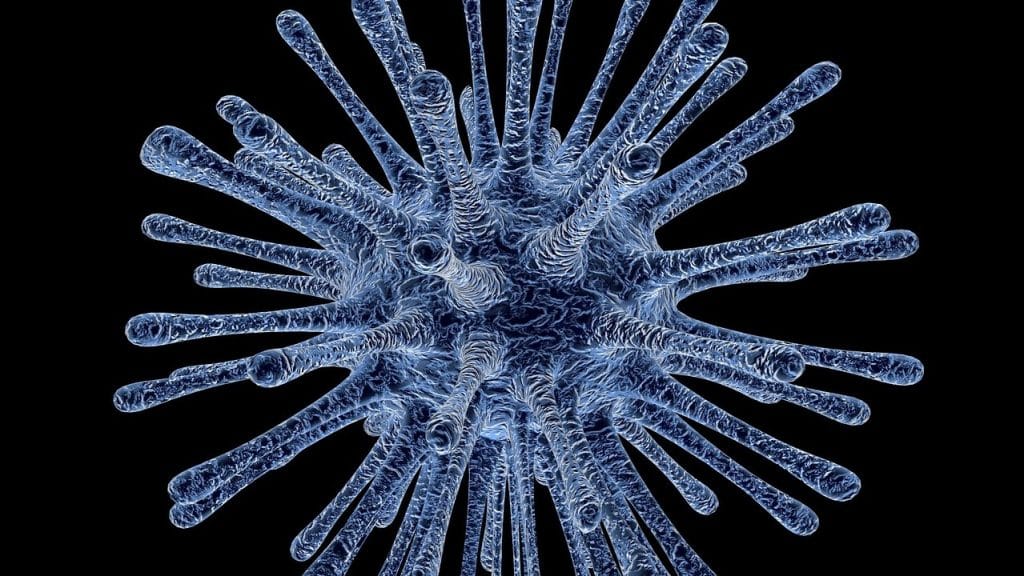43 Key Facts About HIV Everyone Should Know in 2024

HIV, also known as the human immunodeficiency virus, has been a negative presence globally for some time now due to its prevalence and severity. This virus targets our immune systems, weakening the defenses that protect us from cancer and infection. Slowly, our immune cells become immunodeficient, increasing our susceptibility even further, and the relevant stats and facts about HIV confirm its deadliness.
After a time, people living with HIV will enter the advanced stage of this disease, developing Acquired Immunodeficiency Syndrome (AIDS). This causes the development of cancers, as well as pneumonia-like severe symptoms. All things considered, the best way to combat the disease is by preventing it, and the first step is getting educated.
Top 10 Stats and Facts About HIV
- The HIV virus spread to humans from chimps back in the 1920s.
- Over 90% of children with HIV contracted it from their infected mothers.
- First-stage HIV symptoms are flu-like.
- More than 15% of people who have HIV in the US are not aware they are infected.
- In 2019, 690,000 people worldwide died from AIDS-related illness.
- In 2019, the US spent over $34.8 billion to fight HIV.
- People who have HIV have a 63%–130% higher chance of dying from COVID-19.
- In 2019, 36,060 people lived with HIV in Atlanta, as per Atlanta HIV rates.
- Around 95,000 children under 15 died from AIDS and its complications in 2019.
- There were 31 AIDS-related deaths in 1980 or earlier.
Noteworthy HIV Statistics and Facts
HIV testing is vital for the prevention, care, treatment, and support services. Astoundingly, around 81% of people with HIV knew their status, according to global HIV statistics from 2019. Read the following section to learn more.
1. The HIV virus spread to humans from chimps back in the 1920s.
(Avert)
It’s well-known that humans first obtained this virus from chimps. This likely occurred when people living in Africa hunted chimpanzees for meat, according to facts about HIV. The animals had their own version of HIV (SIV: simian immunodeficiency virus), which the hunters contracted. It then mutated, turning into HIV.
2. The HIV virus was first identified as such in 1983 by French researchers.
(Avert)
In 1983, the HIV virus was isolated and finally identified in the Pasteur Institute in France. One of the more interesting HIV/AIDS facts is that it was first called lymphadenopathy-associated virus (LAV). At the same time, scientists in the National Cancer Institute in the US isolated that same virus, naming it HTLV-III.
3. The use of the term “Four-H Club” represented the first instance of real stigmatization tied to AIDS.
(Avert)
Among the more disturbing facts about HIV is that it was a source of a great deal of stigmatization and discrimination in its beginning. Namely, the main at-risk groups in the early stages of the epidemic were homosexuals, hemophiliacs, Haitians, and heroin addicts. This was both due to how easily it transferred among these groups, as well as the disease’s geographic origins. In brief, all these individuals were, and to some extent still are, exposed to discrimination.
4. First-stage HIV symptoms are flu-like.
(HIV)
These symptoms appear within two to four weeks after the HIV infection among two-thirds of people. Notably, they include chills, fever, sore throat, swollen lymph nodes, rash, mouth ulcers, fatigue, muscle aches, and night sweats. And the symptoms last from several days to a few weeks.
5. The risk of transmitting HIV from mother to child is 15%–45%, as per stats on HIV transmission rate.
(Our World in Data)
Relevant data shows a very high chance of HIV being transmitted from mother to child during pregnancy while the child is still in the womb. That said, effective prevention of mother-to-child transmission can lower the risk of virus transmission to babies to 5%.
6. HIV patients are at the greatest risk of contracting tuberculosis.
(World Vision)
HIV and AIDS facts imply that when HIV turns into AIDS, its symptoms get even more severe, and it’s even more difficult to treat. The most common cause of death in AIDS patients is tuberculosis, so experts try to find new treatments for tuberculosis and other illnesses linked to AIDS.
HIV Demographics
Heterosexual men make up 8% of all new HIV diagnoses, whereas heterosexual women—16%. Moreover, people who inject drugs make up 7% of all new HIV infections. Keep reading to find out more.
[visualizer id=”99343″ lazy]
7. In 2018, women accounted for one in five new HIV diagnoses in the US.
(KFF)
That translates to 19% of new HIV diagnoses. Moreover, according to facts about HIV, Black women represent the majority of women who live with HIV. All in all, women face many challenges in accessing prevention, treatment, and other healthcare resources.
8. Men who have sex with men are among those most susceptible to HIV infection.
(WHO)
The data on HIV demographics shows that there’s a wide variety of individuals who are at greater risk of contracting HIV. Others who belong in this group are sex workers and their clients, people who inject drugs, prison populations, and transgender people.
9. Older people with HIV might be at increased risk for severe COVID-19.
(CDC)
That also refers to people with other medical conditions and HIV, as per facts about HIV. Also, the risk of people with HIV getting very sick from this virus is greatest in people who are not on ART and those with low CD4 cell count. However, based on limited data, people with HIV on effective HIV treatment have the same risk for COVID-19 as people without HIV.
10. Over 90% of children with HIV contracted it from their infected mothers.
(World Vision)
Many HIV transmission statistics show that these children have contracted it while they were in the womb, during birth, or from breastfeeding. Consequently, mothers need urgent medical care to minimize the risk of transmitting this disease to their children while pregnant.
11. Men who have sex with men are 26 times more likely to get HIV, as per HIV and AIDS statistics.
(amfAR)
Men who have sex with men, sex workers, transgender people, and individuals who inject drugs have significantly greater chances of developing HIV when compared to other demographics. In fact, HIV stats confirm that sex workers are 30 times more likely to get HIV.
12. MSM make up around 69% of all individuals who have HIV in the US.
(HIV)
MSM represents gay, bisexual, and other men who have sex with men, and this population is the most affected by HIV, based on facts about HIV and AIDS. Moreover, MSM is responsible for 86% of the diagnoses among men. What’s more, Black MSM made 25%, and Hispanic/Latino MSM 20% of HIV new diagnoses.
HIV Statistics Worldwide
In 2019, of the total number of people with HIV, 36.2 million were adults, and 1.8 million were children up to 14. Read on to learn more about how HIV has affected people across the globe.
Snapshot of Global Epidemic Today, by Region
[visualizer id=”99341″ lazy]
13. About 1.7 million people are living with HIV in Eastern Europe and Central Asia.
(KFF)
In 2019, there were 170,000 newly infected in this region, according to stats on HIV. Moreover, between 2010 and 2019, new HIV infections increased by 72% there, and AIDS-related deaths increased by 24%.
14. Since the HIV epidemic started, around 75.7 million people worldwide have been infected.
(UNAIDS)
While we’re seeing a notable drop in the rates of HIV and AIDS today, the number of people who have been infected since this epidemic started is staggering. Moreover, the number of people who have died due to AIDS-related illnesses since the start of the epidemic is around 32.7 million.
15. AIDS in Africa statistics show that Eswatini has the highest rate of HIV in the world.
(KFF)
Namely, the HIV rates of this country, formerly known as Swaziland, are 27%. In addition, the South Africa HIV rate is the highest, with 7.5 million people living with HIV. Nonetheless, the number of new infections in that region has lowered by around 38% since 2010.
16. Around 20.7 million people are living with HIV in Southern and Eastern Africa.
(KFF)
That translates to over half (54%) of all people with HIV. What’s more, two-thirds, or 67%, of children with HIV are also found in this region. That said, AIDS trends worldwide suggest that nearly all nations in that region have a generalized HIV epidemic, meaning their national HIV prevalence is higher than 1%.
17. HIV infections for people injecting drugs are low in Western Europe, Central Europe, and North America.
(amfAR)
While HIV and AIDS stats for Central Asia and Eastern Europe are not as optimistic, showing signs of higher infection rates, other areas of the world are getting better. Namely, Western and Central Europe and North America are reaching the 90–90–90 targets.
In brief, 90-90-90 is a treatment target to help end the AIDS epidemic. By 2020, it was expected that 90% of all people with HIV would know about their HIV status; 90% of all people diagnosed with HIV would receive antiretroviral therapy; 90% of all people receiving antiretroviral therapy would have viral suppression.
18. Eastern Europe and Central Asia show the greatest increase in HIV rates—a 72% rise in 2010–2019.
(amfAR)
Even though AIDS statistics by country show that incidence and infection rates are dropping on the global level, specific locations are actually getting worse. Namely, in Eastern Europe, most HIV infections occur in Russia and Ukraine. Furthermore, along with Eastern Europe and Central Asia’s increase, the Middle East and North Africa have seen a 22% rise in new HIV infections, according to HIV and AIDS statistics.
19. In 2018, over 85,000 tuberculosis cases were diagnosed in Thailand.
(Avert)
Around 81% of those diagnosed had a known HIV status. What’s more, of them, 10% were HIV positive, according to stats on Thailand’s HIV rate. Of those who were positive, 80% were receiving antiretroviral treatment.
The same year, 2,900 people with HIV died from TB-related deaths. Also, the World Health Organization puts Thailand in the leading 30 high-burden countries for TB.
US HIV Facts and Statistics
Around 1.2 million people in the US have HIV, and believe it or not, around one in seven are unaware. Moreover, HIV still affects certain demographics disproportionately, mainly ethnic and racial minorities, as well as bisexual and gay men. Read on to learn more.
[visualizer id=”99337″ lazy]
20. In 2018, the state with the highest number of HIV diagnoses was the District of Columbia, with 34.6 per 100,000.
(Statista) (The Miami Times)
HIV statistics by states show that right behind it was Georgia, with 29.2, and Florida, with 25.6 per 100,000 people. The states with the highest number of people with HIV are Florida, Texas, California, and Georgia. What’s more, the cities with the highest HIV rates in 2019 were Baton Rouge, Louisiana, and Miami, Florida.
21. People aged 16–64 with immunocompromised states from HIV should be considered for vaccination in phase 1c.
(CDC)
That’s because the Center for Disease Control’s AIDS statistics estimate these people may be at increased risk for severe COVID-19 illness. Be that as it may, these are only CDC’s recommendations; each state has its own vaccination plan.
22. US AIDS statistics note that the first case of HIV in the US was reported in 1981.
(HIV)
Of course, it was not recognized and named as such at the time. Notably, the first-ever case was recorded in 1981, on June 16. That day, a 35-year-old man checked in the Clinical Center at the National Institutes of Health. However, the patient passed away just a few months later, in October of the same year.
23. Blacks made up 44% of new HIV cases in 2010, as per CDC HIV stats.
(CDC)
That translates to 20,900 new HIV cases. HIV prevalence among Black people was nearly eight times higher than that of Whites (68.9 v. 8.7 per 100,000 of the population). In other words, Bleaks continue to bear the greatest burden of HIV in the US.
24. There was an 8% drop in HIV infections in the US between 2010 and 2015.
(KFF)
Therefore, following the AIDS epidemic timeline, the statistic mentioned above suggests some promising trends. Be that as it may, approximately 38,500 people were newly infected with HIV in 2015, and infections have become more prevalent in some populations throughout the years.
25. In 2019, 36,060 people lived with HIV in Atlanta, as per Atlanta HIV rates.
(The SIgnal)
Moreover, Atlanta had 1,530 new cases in 2018. According to the data on the Atlanta HIV rate, 80% of the cases were males, and more than 70% of those affected were Black. Then, nearly 71% of the male transmissions stemmed from male-to-male sexual contact. And stats on HIV transmission rates found that almost 60% of the female transmissions occurred due to heterosexual contact.
26. People under 35 accounted for 56% of all HIV diagnoses in 2017.
(KFF)
Generally speaking, teenagers and adolescents are at the highest risk, according to facts about HIV. In addition, people aged 25–34 accounted for 35%, and those aged between 13 and 24 accounted for 21% of all HIV diagnoses in the same year.
27. In 2018, 1,917 new people were newly diagnosed with HIV in New York, as per HIV rates in NYC stats.
(NYC)
The latest data reveals that the HIV prevalence rates have been lowering and fell below 2,000 for the first time since annual HIV reporting started in 2001. Following that, the 2018 HIV statistics for NYC have shown a decrease of 11% from 2017 and a notable 67% decrease from 2001.
28. In 2019, the US spent over $34.8 billion to fight HIV.
(KFF)
HIV/AIDS facts affirm that these funds allow for a comprehensive way to address this health problem. Out of these $34.8 billion, $28 billion was for domestic HIV efforts. What’s more, of the domestic epidemic funds, $21.5 billion was allocated for care, $2.6 billion for research, $3.1 billion for cash and housing assistance, and $0.9 billion for prevention.
29. In 2017, the highest HIV rate in the USA (80%) was in metropolitan areas.
(KFF)
As expected, most new HIV diagnoses in the US can be found in larger, more populated areas. As a matter of fact, in 2017, the top three cities in terms of prevalence were Miami, Orlando, and Atlanta, the HIV statistics confirm, and the leading three states were Florida, California, and Texas.
30. The HIV rates for Asian, Indian/Alaska Native, African American, and Hispanic/Latinos MSM are stable.
(HIV)
That said, HIV diagnoses rates have increased in Native Hawaiian/Other Pacific Islander MSM. On the other hand, MSM of multiple races and white MSM have seen a decrease in HIV diagnoses. Even though the HIV numbers have decreased among MSM in general, trends vary by race/ethnicity.
31. More than 15% of people who have HIV in the US are not aware they are infected.
(KFF)
Many people simply don’t know they have HIV, and the most likely reason is that the initial HIV symptoms aren’t usually that severe, or they may seem similar to other issues.
What’s more, the number of newly diagnosed HIV cases exceeds the death count each year, showing that more and more people are living with this condition. In other words, it’s not the death sentence it once was.
HIV Mortality Rate
The CDC reveals that the age-adjusted HIV-related fatality rate fell from 9.1 to 4.7 from 2010 to 2017, marking a 48% decrease. Read on and get more information.
32. The annual number of AIDS-related deaths nearly halved between 2005/2006 and 2016.
(Our World in Data)
That said, HIV prevalence took its toll on life expectancy in Sub-Saharan Africa. However, statistics of HIV assure that the life expectancy there is now back to its pre-epidemic levels, meaning that millions of people have been saved through better education, information, and access to medication. Generally speaking, it stands to reason that we can be pretty optimistic about HIV statistics in the coming years.
33. There were 31 AIDS-related deaths in 1980 or earlier.
(Factlv)
While the current situation is getting better, it’s interesting how this epidemic started. The AIDS epidemic didn’t begin with a bang but with a whimper. That said, the mortality rate of HIV before 1981 was undoubtedly sobering, but it was nowhere near the tragedies that were to follow. More specifically, in 1981 alone, there were 234 deaths already.
34. In 2019, 690,000 people worldwide died from AIDS-related illnesses.
(UNAIDS)
As many as 1.7 million people were newly infected with HIV that year, totaling 38 million people living with HIV. While the number of HIV deaths in 2020 is still unknown, what we do know is that by June 2020, approximately 26 million people were getting ART therapy.
35. Around 95,000 children under 15 died from AIDS and its complications in 2019.
(amfAR)
HIV/AIDS statistics remark that in 2019, approximately 1.8 million children were living with HIV. The same year, around 68% of adults aged 15 and older who had HIV had access to treatment. However, that was the case for only about 53% of children, based on HIV trends. That said, around 950,000 children up to 14 years old got treatment in 2019, which was more than double the number in 2010, but still far from the target.
36. People who have HIV have a 63%–130% higher chance of dying from COVID-19.
(AIDS Map)
The statistic mentioned above resulted from two extensive studies on the COVID-19 pandemic in the UK. Also, the risk is higher in people under 60. Moreover, Black people with HIV are at the highest risk of dying from COVID-19.
37. In 2016, HIV was the ninth leading cause of death in the US in people between 25 and 44.
(KFF)
Furthermore, HIV statistics in the USA uncover that around 38% of infections occurred because people weren’t aware they had HIV. With this in mind, knowing your HIV status is vital, and current US HIV treatment guidelines suggest starting with ART as soon as a person is diagnosed with HIV.
38. Since 1981, stats on AIDS deaths per year show there have been over 700,000 AIDS-related deaths in the US.
(KFF)
Nowadays, around 1.1 million people are living with HIV in the US. Moreover, there are approximately 38,500 new infections, and somewhere around 51% of people with HIV are virally suppressed, meaning the replication and function of the virus have been suppressed.
39. In the US, around 6,000 people died of HIV/AIDS in 2016, according to stats on the HIV fatality rate.
(KFF)
The AIDS crisis still takes lives every year. However, the HIV death rate, which increased through the 80s and had its peak in 1995, has considerably declined. Notably, there has been an 80% decline since its peak, primarily due to ART.
HIV Statistics and Facts on the Treatment
HIV treatment is referred to as antiretroviral therapy (ART). Even though there isn’t an actual HIV cure, people can get the virus under control in six months with proper medical care. Let’s keep on reading and discover more.
40. Around 25.4 million people who live with HIV received ART treatment in 2019.
(WHO)
This translates to a worldwide ART coverage rate of approximately 67%, based on HIV statistics for 2019. Also, somewhere around 53% of children with HIV received ART in the same year. Generally speaking, this type of treatment can significantly increase the lifespans of people living with HIV/AIDS.
41. In 2011, over 7 million people worldwide did not have access to HIV treatment.
(Info Please)
Facts about HIV/AIDS indicate that treatment can significantly mitigate the symptoms of AIDS and HIV and greatly prolong a patient’s lifespan. Namely, what was once a death sentence is now a condition that people can live with and reach old age. Unfortunately, in 2011, 72% of the children with HIV didn’t get treatment.
42. Between 2000 and 2019, 15.3 million lives were saved due to ART.
(WHO)
The total number of new HIV infections saw a 39% reduction between 2000 and 2019. Moreover, the HIV mortality rate has also decreased by 51%. All in all, this remarkable achievement resulted from the efforts of the national HIV programs, supported by international development partners and civil society.
43. RDTs (rapid diagnostic tests) help start the treatment as soon as possible.
(WHO)
In other words, HIV self-tests enable people who haven’t been reached for HIV testing by facility-based services to test as quickly as possible. What’s more, this allows people to act fast and get their condition under control.
Conclusion
In brief, HIV and AIDS are no laughing matter. That said, while there is still no cure, the disease is at least somewhat manageable. All in all, these statistics and facts about HIV have proven that no matter the cost, no matter how many lives it takes, things are looking up. In fact, death rates have been halved, and infection rates are getting lower. What’s more, people living with HIV or AIDS often turn to online therapy and seek mental health services—all of this contributes to an extended lifespan.
FAQs
What is HIV?
HIV stands for human immunodeficiency virus. This virus attacks the cells that help our bodies fight infections and diseases, and once we’ve contracted this virus, we become more vulnerable. All things considered, the data is clear—once you get HIV, you have it for life since there is no cure at this time.
What is AIDS?
The term AIDS is often used interchangeably with HIV. However, these are not the same. In other words, AIDS (or acquired immunodeficiency syndrome) is a disease that happens once HIV has been left untreated for longer periods. It is essentially the late stage of HIV, which occurs when the HIV virus has completely ravaged the body’s immune system.
How long can you live with HIV?
There is no actual life expectancy for people with HIV. For instance, if the infection is untreated, the HIV survival rate is less than 10%, and the average time from the infection to death is 8–10 years. Be that as it may, this varies due to several factors, like mental health, genes, drug or alcohol abuse, nutrition, treatment, and age.
Who has the highest rate of HIV?
Sub-Saharan Africa shows the highest prevalence of HIV. The countries include Eswatini, Lesotho, and Botswana. At the same time, other countries, like Zimbabwe, have considerably lowered their HIV prevalence.
What percentage of South Africa has HIV?
In 2019, 7.5 million people were living with HIV in South Africa. In fact, 19% of the adult population (15–49) had HIV. Furthermore, there were 200,000 new infections that year and 72,000 deaths related to AIDS. Also, 71% of adults and 47% of children were receiving antiretroviral therapy.
What percentage of the population has HIV?
At the end of 2018, somewhere around 1.2 million people in the US had HIV. What’s more, around 14% of them, or one in seven people, weren’t aware of their HIV status.
How long does HIV live outside the body?
The virus doesn’t live long outside the human body. In fact, research has shown that when HIV grown in the lab is placed on a surface, it loses most of its ability to infect (90%–99%) in a few hours. Moreover, facts about HIV prove that the virus doesn’t survive in water, so swimming pools or hot tubs aren’t a threat.






